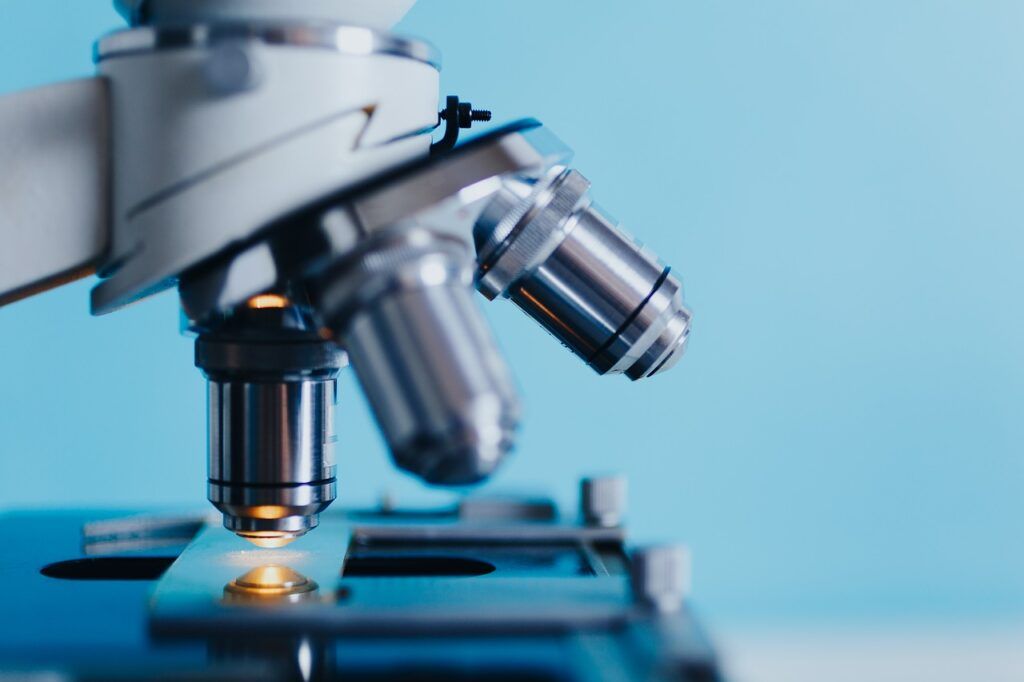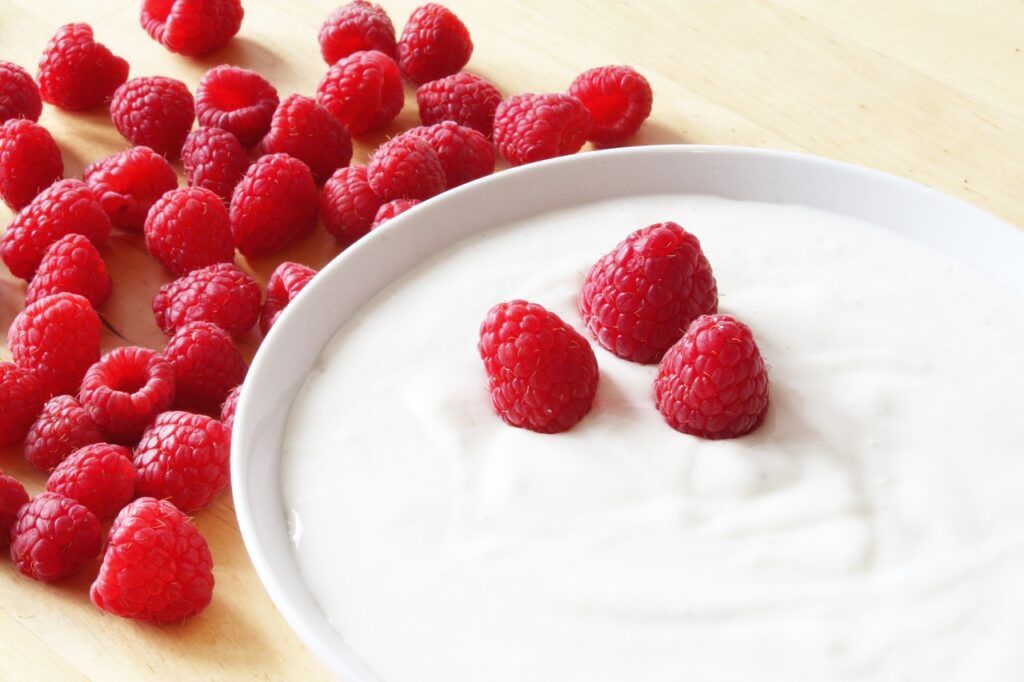When we think about bacteria, unpleasant things like cavities, infections and disease usually come to mind. In reality, our relationship with microbes is far more complex and interesting. Microorganisms thrive in our bodies, both inside and out, and co-evolved with humans over thousands of years as essential partners in health and disease.

Gut Microbiota: The World Within
About 100 trillion microbes live within the human gastrointestinal tract, the largest interface between the body (200-400 m2) and the external environment. This assembly, known as the gut microbiota, contains mostly bacteria (between 500 and 1,000 species), but also viruses, fungi, and protozoa. Scientists have identified a large set of unique bacterial genes (the microbiome) that exceeds by more than 100 times the number of genes (23,000) that comprise the human genome (1) This is why the gut microbiome is considered our “second genome”.
The composition of gut bacteria is inherited at birth, but afterwards is heavily influenced by lifestyle factors (diet, exercise, stress, environmental exposures) (2). Every individual has a unique mix of species, most of them innocuous, and some potentially harmful, that define a symbiotic relationship that is vital to normal health.

Gut Microbiota in Health
Main benefits of a normal gut flora include regulating energy production and use, protecting against pathogens, modulating the host’s immune response, and preserving the integrity of intestinal cells (3).
Gut bacteria produce enzymes that assist in the breakdown and absorption of foods. Bacterial enzymes help degrade proteins into absorbable amino acids, and facilitate production and transport of vitamins and minerals into the blood to be distributed to cells. Importantly, colonic bacteria are responsible for fermenting indigestible dietary polysaccharides (fiber) and, to a lesser degree, also proteins, into short-chain fatty acids (SCFAs) like acetate, butyrate, and propionate. Bacterial SCFAs induce insulin secretion, thus helping maintain glycemia over time, and promote satiety by activating hormonal secretions in specialized enteroendocrine (L) cells. SCFAs are also used as fuel by colonic bacteria; during dietary fiber deficiency, they feed instead on protective mucins secreted by intestinal cells, leading to erosion of the mucus barrier (4).
A diverse and balanced gut flora prevents colonization by pathogenic bacteria and viruses that damage the gut epithelium and induce inflammation. It also protects against environmental toxins (dust, pollen, chemicals) by triggering immune responses to neutralize their effects (5).
Gut Microbiota in Disease
Dysbiosis (or dysbacteriosis) refers to the alteration in the composition of microbial populations within the body, and is a characteristic feature of many metabolic diseases (6). A common cause of dysbiosis is the prevalence of a high fat/high sugar “Western diet” and a sedentary lifestyle (see below).
Antibiotics can also alter the balance of bacterial populations in the gut. Most conventional antibiotics indiscriminately kill or prevent the growth of both pathogenic and beneficial microbes, favoring expansion of opportunistic pathogens (7).
It has been known for some time that changes in the gut microbiota can affect the metabolism and effectiveness of therapeutic drugs (8). Recent evidence now shows that non-antibiotic drugs can also impede the growth of some bacterial strains, and facilitate antibiotic resistance (9).
Dysbiosis of the gut microbiota has been linked to intestinal disorders such as inflammatory bowel disease, irritable bowel syndrome (IBS), coeliac disease, and extra-intestinal disorders including autoimmune conditions (autoimmune hepatitis, type 1 diabetes, spondyloarthritis, multiple sclerosis and rheumatoid arthritis), allergy, asthma, metabolic syndrome, cardiovascular disease, obesity, and cancer. Colonic cancer, for instance, has been linked to protein fermentation by pathogenic bacteria following excessive consumption of red meats (10, 11).
For expert insight into gut microbiota and inflammation, listen to THE INFECTION CONNECTION AND LEAKY GUT WITH EVAN BRAND
Gut Microbiota, Systemic Inflammation, and Obesity
Perhaps the most direct example of the influence of gut dysbiosis on human disease is found in obesity. A high fat/high carb diet unfavorably alters the gut microbial composition, leading to increased intestinal permeability. This facilitates the transfer to the blood of bacterial lipopolysaccharides (LPS, also called endotoxin), the major glycolipid component of the outer membrane of gram-negative bacteria, which make up ~70% of the total bacteria in the gut. This causes metabolic endotoxemia, a condition characterized by a pro-inflammatory and pro-oxidant environment, often observed in obesity, that results from endotoxin-mediated activation of Toll-like receptor 4 (TLR4) on the surface of immune cells and other cell types (e.g. skeletal muscle, adipocytes, and liver cells) (12, 13).

Dr. Tatta’s simple and effective pain assessment tools. Quickly and easily assess pain so you can develop actionable solutions in less time.
How Diet Shapes The Human Gut Microbiota
In healthy individuals, the gut microbiota is dominated by two bacterial lineages (phyla), i.e. Bacteroidetes and Firmicutes, that compete for shared nutritional resources (14).
- Research in mice showed that a high fat diet increased the proportion of Firmicutes relative to the more beneficial Bacteroidetes, and this finding was confirmed in patients with obesity or diabetes. The reason behind this population switch is that different microbes thrive on different carbon sources. Bacteroidetes ( Bacteroides, Alistipes, Parabacteroides, and Prevotella), for instance, mostly use glycans (complex polysaccharides, i.e fiber) as fuel. Thus, people following plant-based (carbohydrate) diets have higher representation of Prevotella bacteria in the gut.
- In contrast, Firmicutes (Bacillus, Listeria, Staphylococcus, Streptococcus, Enterococcus, and Clostridium) can more easily exploit a larger variety of nutrients (amino acids, sugars, fatty acids) and their growth is positively correlated with caloric intake (15).
- High fat/high carb diets, on the other hand, were shown to stimulate the growth of Proteobacteria, another prominent phylum of bacteria found in the gut. This group includes a wide variety of pathogens such as Escherichia, Salmonella, Vibrio, Helicobacter, and Yersinia. These are actively fought by the immune system, but under permissive conditions such as a high fat/high carb diet, they can overrun the body’s defenses and contribute, through endotoxemia and inflammation, to a range of human diseases (14, 16).
Prebiotics and probiotics are commonly used to modulate the composition of bacterial communities in the gut. Prebiotic fibers are present in a several foods such as whole grains, fruits, root vegetables, and legumes, and are used to promote the growth of beneficial bacteria. Probiotics consist of live bacteria and yeast and are found in fermented foods such as yoghurt, kefir, sauerkraut, and tempeh. They are used to treat diarrhea, constipation, and some intestinal disorders, and to replenish gut flora after antibiotic use (17).
Nourish Your Gut
As you’ve seen, a balanced gut flora helps ensure adequate digestion, assimilation, defense and repair of a strong immune system. However, its benefits go well beyond. In future blogs we’ll discuss how nutrition, physical activity and exercise can help create an optimal gut microbiota environment, and how this changes over the course of chronic disease.
Take your Physical Therapy practice to the next level with Functional Nutrition for Chronic Pain, a fully accredited CEU course!
REFERENCES:
1- Pasolli, E., Asnicar, F., Manara, S., Zolfo, M., Karcher, N., Armanini, F., … & Collado, M. C. (2019). Extensive unexplored human microbiome diversity revealed by over 150,000 genomes from metagenomes spanning age, geography, and lifestyle. Cell, 176(3), 649-662.
2- Rothschild, D., Weissbrod, O., Barkan, E., Kurilshikov, A., Korem, T., Zeevi, D., … & Shilo, S. (2018). Environment dominates over host genetics in shaping human gut microbiota. Nature, 555(7695), 210.
3- Thursby, E., & Juge, N. (2017). Introduction to the human gut microbiota. The Biochemical journal, 474(11), 1823–1836. doi:10.1042/BCJ20160510
4- Koh, A., De Vadder, F., Kovatcheva-Datchary, P., & Bäckhed, F. (2016). From dietary fiber to host physiology: short-chain fatty acids as key bacterial metabolites. Cell, 165(6), 1332-1345.
5- Bäumler, A. J., & Sperandio, V. (2016). Interactions between the microbiota and pathogenic bacteria in the gut. Nature, 535(7610), 85–93. doi:10.1038/nature18849
6- Gagliardi, A., Totino, V., Cacciotti, F., Iebba, V., Neroni, B., Bonfiglio, G., … & Schippa, S. (2018). Rebuilding the gut microbiota ecosystem. International journal of environmental research and public health, 15(8), 1679.
7- Francino M. P. (2016). Antibiotics and the Human Gut Microbiome: Dysbioses and Accumulation of Resistances. Frontiers in microbiology, 6, 1543. doi:10.3389/fmicb.2015.01543
8- Enright, E. F., Gahan, C. G., Joyce, S. A., & Griffin, B. T. (2016). The Impact of the Gut Microbiota on Drug Metabolism and Clinical Outcome. The Yale journal of biology and medicine, 89(3), 375–382.
9- Maier, L., Pruteanu, M., Kuhn, M., Zeller, G., Telzerow, A., Anderson, E. E., … Typas, A. (2018). Extensive impact of non-antibiotic drugs on human gut bacteria. Nature, 555(7698), 623–628. doi:10.1038/nature25979
10- Singh, B., Qin, N., & Reid, G. (2015). Microbiome regulation of autoimmune, gut and liver associated diseases. Inflammation & Allergy-Drug Targets (Formerly Current Drug Targets-Inflammation & Allergy), 14(2), 84-93.
11- Carding, S., Verbeke, K., Vipond, D. T., Corfe, B. M., & Owen, L. J. (2015). Dysbiosis of the gut microbiota in disease. Microbial ecology in health and disease, 26, 26191. doi:10.3402/mehd.v26.26191
12- Cani, P. D., Amar, J., Iglesias, M. A., Poggi, M., Knauf, C., Bastelica, D., … & Waget, A. (2007). Metabolic endotoxemia initiates obesity and insulin resistance. Diabetes, 56(7), 1761-1772.
13- Boutagy, N. E., McMillan, R. P., Frisard, M. I., & Hulver, M. W. (2015). Metabolic endotoxemia with obesity: Is it real and is it relevant?. Biochimie, 124, 11–20. doi:10.1016/j.biochi.2015.06.020
14- Clarke, S. F., Murphy, E. F., Nilaweera, K., Ross, P. R., Shanahan, F., O’Toole, P. W., & Cotter, P. D. (2012). The gut microbiota and its relationship to diet and obesity: new insights. Gut microbes, 3(3), 186–202. doi:10.4161/gmic.20168
15- Fischbach, M. A., & Sonnenburg, J. L. (2011). Eating for two: how metabolism establishes interspecies interactions in the gut. Cell host & microbe, 10(4), 336–347. doi:10.1016/j.chom.2011.10.002
16- Rizzatti, G., Lopetuso, L. R., Gibiino, G., Binda, C., & Gasbarrini, A. (2017). Proteobacteria: A Common Factor in Human Diseases. BioMed research international, 2017, 9351507. doi:10.1155/2017/9351507
17- Roberfroid, M. B. (2000). Prebiotics and probiotics: are they functional foods?. The American journal of clinical nutrition, 71(6), 1682S-1687S.



